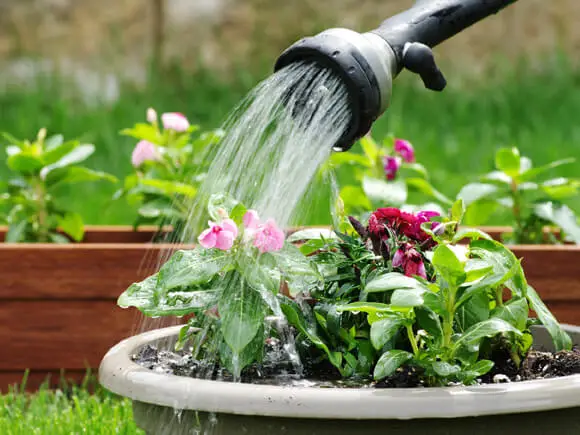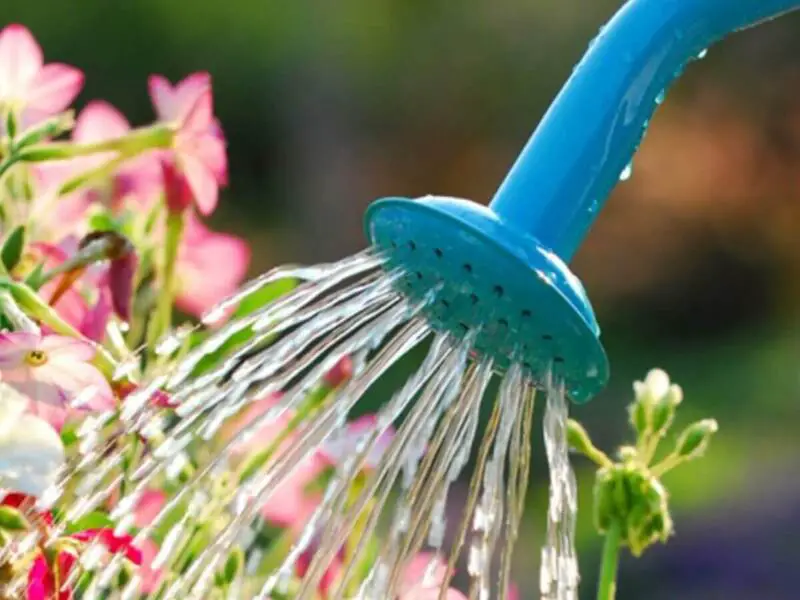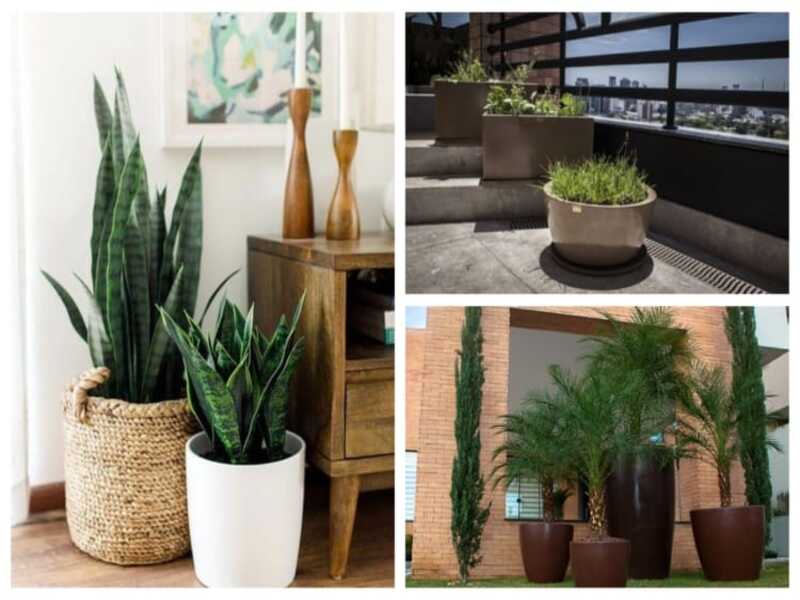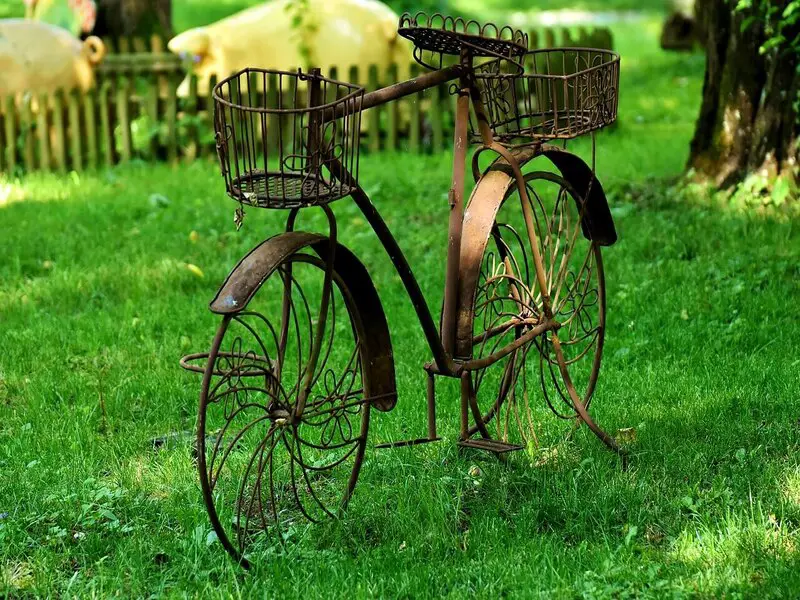If you have a garden, you know that watering is one of the most important tasks to ensure your plants grow healthy and strong. However, many people struggle with knowing how to properly water their garden plants. In this article, we’ll cover some essential tips and techniques for watering your garden plants effectively.
Why Proper Watering is Important
Water is a crucial element for the growth and development of garden plants. Without sufficient water, plants cannot absorb nutrients from the soil, and their growth will be stunted. Moreover, insufficient water can cause the plant to wilt, and in extreme cases, it may lead to the death of the plant.
On the other hand, overwatering can be just as damaging as underwatering. When plants receive too much water, their roots become waterlogged, and the plant cannot absorb enough oxygen. This can lead to root rot, a condition that can be fatal for plants.
Proper watering helps maintain the balance between water intake and loss, which is essential for the plant’s overall health. When plants receive the right amount of water, they are better equipped to resist pests and diseases, and they are more likely to produce healthy, vibrant leaves, flowers, and fruits.
Proper watering is especially critical during the summer months when temperatures are high and rainfall is often scarce. During this time, plants may require more frequent watering to avoid wilting and other issues. By understanding the importance of proper watering and following best practices, gardeners can ensure that their plants remain healthy and happy throughout the growing season.

How Often to Water Garden Plants
Determining how often to water garden plants can be a bit of a balancing act. Water too much, and you risk drowning the plants, but water too little, and they may wilt and die. The frequency of watering depends on several factors, including the type of plant, soil type, weather conditions, and the stage of growth.
In general, most garden plants need to be watered once or twice a week, but this can vary depending on the specific plant and environmental conditions. For example, plants that are in direct sunlight for long periods may require more frequent watering than those in the shade. Likewise, plants in sandy soil may require more water than those in loamy soil.
To determine when to water, it’s important to check the soil moisture level regularly. Stick your finger about an inch into the soil; if it feels dry, it’s time to water. You can also use a moisture meter or a soil probe to measure the soil moisture level.
It’s also important to note that the watering needs of plants can vary depending on their growth stage. For example, newly planted seedlings require more frequent watering than established plants. During the hot summer months, plants may require more frequent watering to prevent wilting.
In general, it’s better to water deeply and less frequently than to water shallowly and frequently. This encourages plants to develop deep root systems, which are better able to withstand periods of drought. Additionally, watering in the morning or evening when temperatures are cooler can help reduce water loss due to evaporation.
How Much Water to Use
Knowing how much water to use is another crucial aspect of proper watering for garden plants. The amount of water needed depends on several factors, including the size of the plant, the type of soil, and the weather conditions.
As a general rule, most garden plants need about an inch of water per week, which can be provided through rainfall or irrigation. It’s important to note that this is just a rough guideline, and the actual amount of water required may vary depending on the specific plant and environmental conditions.
To determine how much water you’re applying, you can use a rain gauge or a container. Place the gauge or container in the area where you’re watering, and measure the amount of water collected after each watering session. This will give you an idea of how much water your plants are receiving.
It’s also important to water deeply and thoroughly, rather than watering lightly and frequently. This helps encourage deep root growth, which can help plants better withstand periods of drought. If you’re not sure how long to water, you can use a timer or keep an eye on the soil moisture level.
What Time of Day to Water
The time of day when you water your garden plants can also affect their growth and health. Generally, it’s best to water early in the morning when temperatures are cooler and the sun is not yet at its peak. This allows the plants to absorb the water they need before the heat of the day sets in.
Watering in the middle of the day when the sun is at its peak should be avoided, as the water can evaporate quickly, and the intense sunlight may damage the leaves. If you must water during the day, try to do so on cloudy or overcast days when the sun’s intensity is lower.
Watering in the evening can also be beneficial, but it’s important to avoid getting the leaves too wet, as this can increase the risk of fungal diseases. If you do water in the evening, make sure to do it early enough so that the leaves have time to dry before nightfall.
In addition to the time of day, it’s also important to consider the weather conditions when deciding when to water. During periods of hot, dry weather, you may need to water more frequently, and it may be necessary to water in the middle of the day to prevent the plants from drying out. Conversely, during periods of cool or damp weather, you may need to water less frequently to avoid overwatering and root rot.
By paying attention to the time of day and weather conditions, you can ensure that your garden plants receive the water they need to grow and thrive, while also minimizing the risk of damage and disease.
The Best Ways to Water Garden Plants
There are several ways to water garden plants, including:
- Hand watering: Use a watering can or hose to water plants directly at the base.
- Drip irrigation: A slow and steady drip system delivers water directly to the soil.
- Sprinklers: This is a good option for larger areas or to water several plants at once.
- Soaker hoses: Similar to drip irrigation, soaker hoses deliver water slowly and directly to the soil.
Techniques for Watering Specific Types of Plants
Different types of plants have different watering needs. Here are some general tips for watering different types of plants:
Annuals and Perennials
Annuals and perennials need regular watering to keep them healthy and blooming. Water them deeply, so the water reaches the roots. Avoid getting water on the leaves, as this can increase the risk of disease.
Vegetables and Fruits
Vegetables and fruits need consistent watering, especially during their growing stage. Water deeply to encourage root growth, and make sure the soil stays consistently moist, but not waterlogged. Avoid getting water on the leaves, as this can increase the risk of disease.
Trees and Shrubs
Trees and shrubs need deep watering to encourage strong root growth. Water them slowly and deeply, so the water reaches the roots. Avoid getting water on the leaves, as this can increase the risk of disease.
Succulents and Cacti
Succulents and cacti are adapted to dry conditions and require less water than other types of plants. Water them deeply, but infrequently. Allow the soil to dry out completely between waterings to prevent root rot.
Signs of Overwatering and Underwatering
One of the most critical aspects of proper watering is avoiding both overwatering and underwatering, which can both have harmful effects on your garden plants. Overwatering occurs when plants receive too much water, which can lead to root rot and other issues. Underwatering, on the other hand, occurs when plants don’t receive enough water, which can cause them to dry out and wilt.
One way to identify whether your plants are overwatered or underwatered is to observe their leaves. If the leaves are yellowing or showing signs of mold, this could indicate that they are receiving too much water. Additionally, a strong musty odor may be present, particularly in the soil surrounding the roots. If you notice any of these signs, it’s essential to reduce the amount of water you’re giving your plants.
If your plants are underwatered, they will typically display wilted leaves that appear dry and lifeless. The soil may also appear dry and cracked, and the plant may be more susceptible to disease and pest infestations. Leaf drop is another common sign of underwatering, as the plant will begin to shed its leaves in an effort to conserve water.
To avoid both overwatering and underwatering, it’s essential to monitor the soil moisture level regularly. You can do this by sticking your finger about an inch into the soil. If the soil feels dry, it’s time to water your plants. If the soil feels damp, wait a day or two before checking again. By paying attention to the signs of overwatering and underwatering, you can adjust your watering schedule and help your garden plants thrive.
Watering Tips for Different Climates
Watering your garden properly can be a bit of a challenge, especially if you live in an area with extreme climate conditions. Here are some watering tips to help you keep your garden healthy in different climates:
- Dry Climates: In dry climates, you may need to water your plants more frequently, as the hot and dry weather can quickly dry out the soil. It’s recommended to water your garden in the morning or late afternoon when the temperatures are cooler. Water slowly and deeply, making sure the soil is moist to a depth of at least 6 inches. It’s also essential to mulch around the plants to help retain moisture in the soil.
- Humid Climates: In humid climates, you may not need to water your plants as frequently, as the air is already saturated with moisture. However, you still need to pay attention to the soil moisture level and adjust your watering accordingly. Avoid watering in the evening when the temperatures drop, as this can increase the risk of fungal diseases.
- Cold Climates: In cold climates, you may need to water your plants less frequently, as the soil may already be moist from rain or snow. It’s essential to avoid watering in freezing temperatures, as this can damage the plants. Watering in the morning when the temperatures are warmer can help prevent this.
- Coastal Climates: In coastal climates, you may need to water your plants more frequently, as the salty air can quickly dry out the soil. It’s recommended to water your garden in the morning or late afternoon, making sure to water slowly and deeply. It’s also essential to rinse the leaves and stems regularly to remove salt build-up.
By adjusting your watering schedule to suit your climate, you can help keep your plants healthy and thriving. Don’t be afraid to experiment with different watering methods to find what works best for your garden. Remember, proper watering is essential for the health and vitality of your plants, so take the time to do it right.
How to Conserve Water in Your Garden
Conserving water in your garden is not only good for the environment, but it can also save you money on your water bill. Here are some tips for conserving water in your garden:
- Use mulch to retain moisture in the soil.
- Plant drought-tolerant plants.
- Use rain barrels to collect rainwater for watering.
- Avoid watering during the hottest part of the day.
- Fix any leaks or broken sprinklers promptly.
Tools and Equipment for Watering Garden Plants
There are several tools and equipment available for watering garden plants, including:
- Watering cans
- Hoses
- Drip irrigation systems
- Sprinklers
- Soaker hoses
- Rain gauges
Choose the tools and equipment that best suit your needs and the needs of your garden plants.
Conclusion
Watering your garden plants properly is essential for their growth and health. By following these tips and techniques, you can ensure your plants receive the right amount of water at the right time. Remember to pay attention to the soil moisture level, adjust your watering schedule according to the climate, and conserve water where possible.




